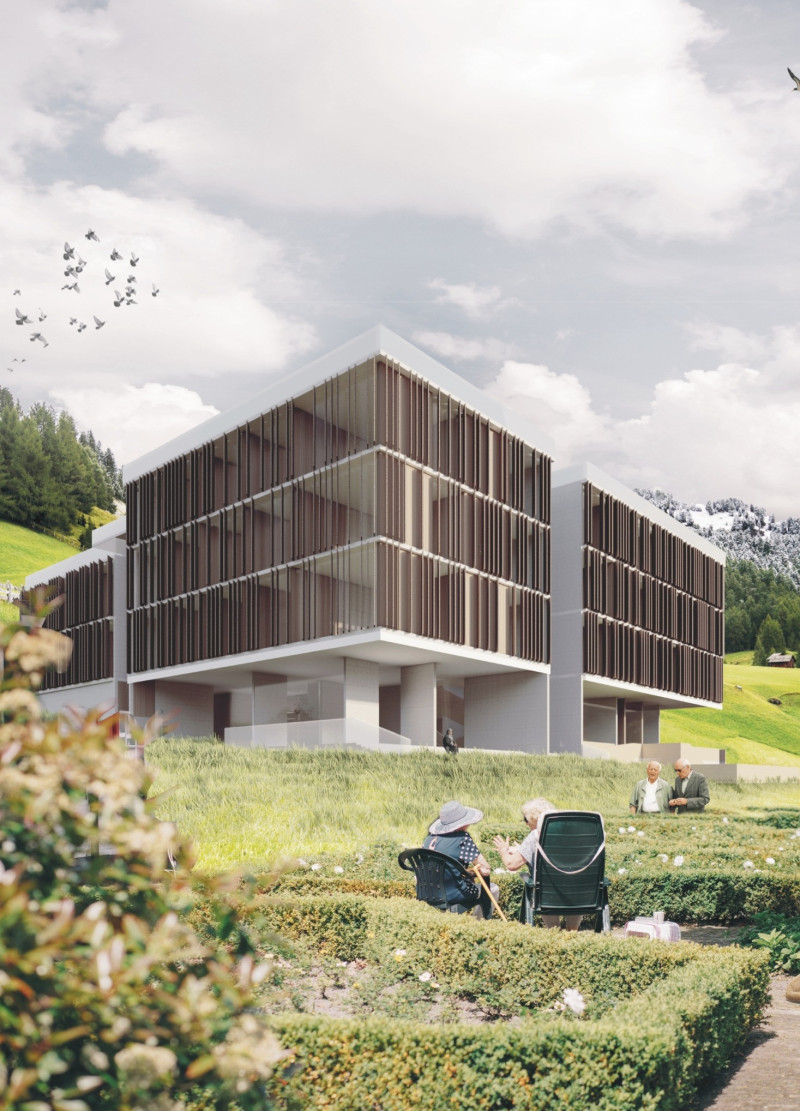5 key facts about this project
At its core, the design prioritizes functionality while also embracing a modern aesthetic, yielding a structure that enhances the user experience. The project serves as a multipurpose space that caters to various functions, whether it be for residential, commercial, or communal use, demonstrating versatility in its application. This adaptability is essential in today’s architectural landscape where mixed-use spaces are becoming increasingly vital to urban growth and sustainability.
One notable aspect of the project is its commitment to environmentally responsive design. The architectural concept employs sustainable materials and strategies that minimize ecological impact while maximizing energy efficiency. This not only includes the use of locally sourced materials but also features like green roofs, rainwater harvesting systems, and energy-efficient glazing. Such elements exemplify a dedication to integrating principles of sustainability within the fabric of the design, contributing to a larger dialogue on environmental responsibility in architecture.
Exploring the exterior of the building reveals a façade that skillfully balances transparency and solidity. Large glass panels invite natural light into the interior spaces, fostering a connection between the occupants and the surrounding environment. This transparency is contrasted by robust structural elements that lend a sense of stability. The careful consideration of the materiality is critical here; the juxtaposition of glass with textured concrete and steel creates a rich visual narrative that is neither overwhelming nor stark. The tactile qualities of these materials invite users to engage with the architecture on a sensory level, enhancing their overall experience.
Inside, the layout exemplifies thoughtful spatial planning that promotes flow and accessibility. Open-plan designs allow for fluid movement between areas while strategically placed walls and partitions create intimate spaces when needed. This approach reflects an understanding of social dynamics and encourages interaction among users. The interior finishes complement the overall aesthetic, using a palette that echoes the external materiality—natural woods, polished stones, and subtle colors harmonize to create a calming atmosphere.
Attention to detail extends to the integration of technology within the project. Smart building systems are seamlessly woven into the architecture, enhancing user convenience and building performance without overshadowing the design intent. This integration not only improves the building's functionality but also elevates the user experience, allowing occupants to engage with their environment in new ways.
Unique design approaches are evident throughout the site planning, which considers both community interaction and urban density. Landscaped areas serve as gathering spots, encouraging social interaction while providing essential green space in an otherwise urban setting. The design respects the scale and context of its surroundings, reinforcing a sense of belonging and connection within the neighborhood.
The architectural details reflect a contemporary sensibility that values clarity and elegance. Subtle curves and careful alignments guide the eye and create a rhythm across the façade, demonstrating the architect's commitment to visual harmony. This nuanced approach fosters a structure that feels both modern and timeless, appealing to a broad audience while still maintaining a distinct identity.
In summary, the project stands as a testament to thoughtful architectural design, balancing aesthetic appeal with functional necessity. Its commitment to sustainability, community engagement, and innovative spatial organization positions it as a vital example of modern architecture. For those intrigued by the nuances of this architectural endeavor, exploring the architectural plans, sections, and specific design details can provide deeper insights into the thought processes that shaped this exceptional project. Discovering each layer of design in greater detail will undoubtedly enhance appreciation for the meticulous work that defines this piece of contemporary architecture.


























